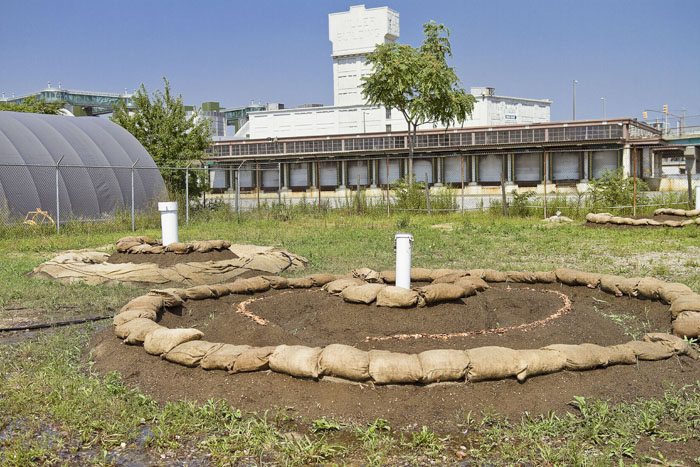#bcsfh2o How the intersection between art and environmental activism is helping our environment: https://t.co/RrX4dH0JI2
— Caroline Zuba (@zcscience) November 29, 2017
Though our presentation does not directly focus on the oil spills that have dramatically changed Newtown Creek for the worst, rain runoff still contains the remnants, and continues to be a huge issue both in the soil and in the water.
What our project does directly focus on, however, is the important place of community activism and engagement in reinvigorating the Newtown Creek area. Innovative activism will be able to target all the issues facing the Creek, including discussing runoff, CSOs, current pollution, and the eventual elimination of the remnants of oil spills and waste in and around the creek.


Jan Mun is one of these activists – and she is an artist. Her land art installation and social sculpture, titled Fairy Rings at Exxonmobil Greenpoint Petroleum Remediation Project Site, aims to navigate science, art, and sustainability using mycoremediation. The process using fungi to decompose surrounding pollutants and eventually shape a new, better ecology.




 This image has been added to this post as an example of the vast fluxes in climate in the continent of Africa.
This image has been added to this post as an example of the vast fluxes in climate in the continent of Africa.
